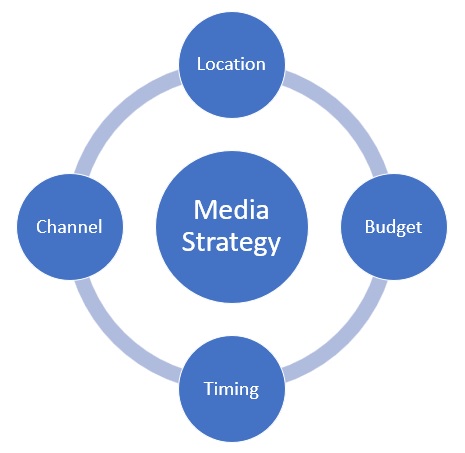- Business Concepts ›
- Marketing and Strategy ›
- Media Strategy
Media Strategy
Definition, Importance, Factors & Example
This article covers meaning & overview of Media Strategy from marketing perspective.
What is meant by Media Strategy?
Media strategy is the usage of the appropriate media mix in order to achieve desired and optimum outcomes from the advertising campaign. It plays a key role in advertising campaigns. Media Strategy is not just about informing customers about products or services but also placing right message towards the right people at the right time.
Media Strategy is designed to achieve the above mentioned target but the budget is always kept in mind.
Importance of Media Strategy
Media strategy is very important when it comes to branding and sending a message to the target group. Without a correct media strategy, the message would not reach to right people at the right time and a company will end up spending a lot of money as well. A right media strategy has the right mix of all the factors which are essential in reaching out to the customer.
The aim of media strategy is deliver the right positioning to the customer at an optimum cost to the company or the organization.

Factors in deciding Media Strategy
Following are the factors in devising media strategy for a company:
1. Location
Location is all about where to launch and run the campaign. Location should be the one which gives maximum ROI. In current scenarios, online and offline locations are both considered while deciding a media strategy.
Apart from conventional channels, even social media for relevant locations is used.
2. Budget
For deciding the media strategy, budget is very important. Every brand wants to reach maximum target audience using all possible channels but that is not possible as everything costs money and we need to optimize costs and hence the budget impacts the media strategy.
3. Timing
Timing is an important aspect of media strategy. When to show the messaging to the customers can make all the difference.
Toothbrush or toothpaste ads may be more effective during morning or late evening as target group might actually be about to interact with a toothpaste/brush.
4. Channel
Channels and locations are quite similar in current context where online media is very relevant but for conventional advertising and messaging, a lot of channels like
1. TV
2. Print
3. Radio
are still very relevant and used extensively in the media strategy.
The timing of advertisement is very critical especially with respect to the seasonal products. There is no point in airing advertisement for room heaters in summer season. It should be aired right at the end of monsoon and beginning of winter season.
Media Strategy Example
Let us take an example of a pair of jeans. Now to make the right media strategy, the company needs to see the factors. As jeans is a product targeted to youngsters and also to other people who prefer them, a right strategy has to be made.
Hoardings, print ads in magazines along with TV ads can reach out a lot of target groups. For reaching more specific audience, online channels can be explored with proper messaging and positioning.
Hence, this concludes the definition of Media Strategy along with its overview.
This article has been researched & authored by the Business Concepts Team which comprises of MBA students, management professionals, and industry experts. It has been reviewed & published by the MBA Skool Team. The content on MBA Skool has been created for educational & academic purpose only.
Browse the definition and meaning of more similar terms. The Management Dictionary covers over 1800 business concepts from 5 categories.
Continue Reading:
What is MBA Skool?About Us
MBA Skool is a Knowledge Resource for Management Students, Aspirants & Professionals.
Business Courses
Quizzes & Skills
Quizzes test your expertise in business and Skill tests evaluate your management traits
Related Content
All Business Sections
Write for Us